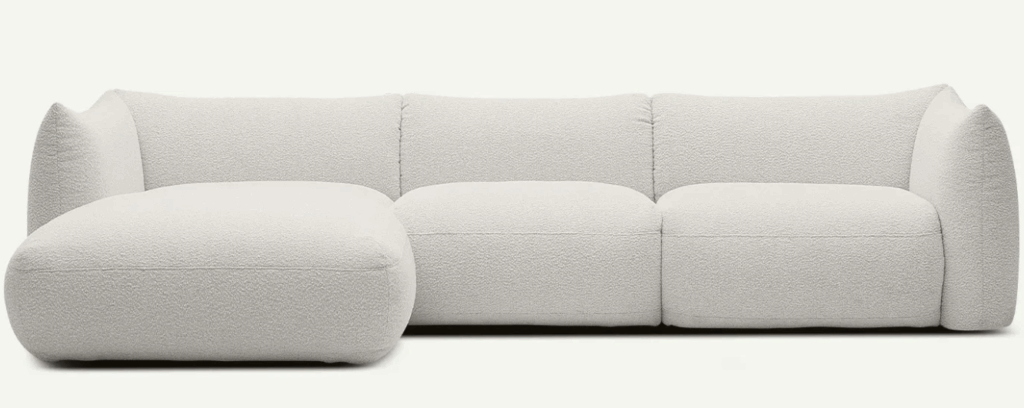Posted on May 5, 2025
Upholstered vs wooden beds – choosing the best bed frame for your home
Understanding the Practical Differences Between upholstered vs wooden beds
When deciding between upholstered vs wooden beds, it’s essential to consider not only your design preferences but also your lifestyle, maintenance expectations and comfort needs. Each type of bed offers distinct advantages, and your choice can significantly affect how your bedroom looks and feels. This bed frame comparison is especially relevant for those setting up a new home, upgrading their interiors or simply seeking better rest.
Upholstered beds are known for their luxurious feel and plush headboards, often creating a cosy, inviting atmosphere. They are well-suited to contemporary interiors and come in a wide range of fabrics, colours and textures. Wooden beds, by contrast, bring a timeless, structured aesthetic to a room. Their natural material adds warmth and durability while offering a more minimalist or rustic feel depending on the finish. Before you make your final decision, consider how your bed frame will complement the rest of your furniture, such as a corner sofa in the master suite or a sofa bed in the guest room.

Comfort and Aesthetics – upholstered vs wooden beds: Which One Suits Your Sleep Style?
If comfort is a top priority, upholstered bed frames often have the upper hand. Their cushioned headboards make reading or watching TV in bed far more comfortable. They also help insulate the bed area and can add a layer of softness to rooms with hard flooring or minimalist décor. Upholstered beds are available in fabric finishes like velvet, linen or microfibre, allowing for tailored style choices that contribute to a restful environment.
Wooden beds, however, stand out in their sturdiness and classic design appeal. They work exceptionally well in Scandinavian or traditional interiors, offering visual lightness and structural clarity. While they may lack the padding of their upholstered counterparts, they pair beautifully with natural textiles and layered bedding. If you’re aiming for durability with minimal upkeep, wooden frames are often easier to maintain, as they don’t attract dust or pet hair in the same way as fabric surfaces do. The same principles apply when selecting a sofa or a durable corner sofa for busy households.
Durability and Maintenance in Daily Use
When it comes to long-term durability, both wooden and upholstered beds perform well, but in different ways. Hardwood bed frames, especially those made from oak or walnut, are highly resilient and can last for decades with proper care. They are less susceptible to sagging and maintain their form even with frequent use. A wooden frame might be ideal if you’re seeking a low-maintenance option that can stand the test of time.
Upholstered beds, while equally robust structurally, require more attention in terms of cleaning and maintenance. Dust, spills and pet fur can be more visible on fabric surfaces, although many modern upholstery options are stain-resistant or removable for washing. Regular vacuuming and occasional deep cleaning will help preserve the fresh appearance of an upholstered headboard. If you have pets or young children, these considerations may guide you towards one frame type over the other—just as they would when selecting a sofa or a family-friendly sofa bed.
Space, Style and Bedroom Functionality
Choosing bed frames in the UK often comes down to how much space you have and what kind of visual impact you want. Wooden bed frames tend to take up less visual space, making them an excellent option for small bedrooms or minimalistic designs. Their open structure and clean lines help to keep the room feeling light and spacious. This is particularly helpful in flats or shared accommodations where the bed needs to double as a focal point and a functional space-saver.
On the other hand, upholstered beds often add a sense of drama or softness that transforms the bedroom into a relaxing retreat. If you have more space and want a statement piece that doubles as a comfort zone, a tall fabric headboard or wingback style can be just the thing. Their padded form makes them especially appealing in homes where the bedroom serves multiple functions—from sleep to work to relaxation—just like how a corner sofa might shape a multifunctional lounge area.
Making the Right Choice for Your Lifestyle
Ultimately, the decision between upholstered vs wooden beds should be guided by your daily routine, aesthetic vision and practical needs. If you’re someone who enjoys lounging in bed with a book or a laptop, and you appreciate softness and customisation, an upholstered bed frame will serve you well. For those who prefer timeless materials, low maintenance and structural integrity, a wooden frame is the way to go.
Both options can beautifully support your sleep quality and interior harmony, especially when aligned with the rest of your home decor. Whether you’re matching your bed to a sleek sofa in the living room, a versatile sofa bed in the guest area or a structured corner sofa in the open-plan lounge, cohesion is key. Whichever you choose, your bed frame is an investment in both comfort and design—and the right decision will reward you for years to come.
This article explores the key differences between upholstered bed frames and wooden bed frames, helping you decide which type best fits your space, comfort needs and interior style. Whether you’re furnishing a modern flat or a traditional home, understanding the pros and cons of each option can guide you to make a smarter, long-lasting choice. Learn how to choose between upholstered vs wooden beds in the UK and discover the best tips for choosing bed frames that support both design and durability.

